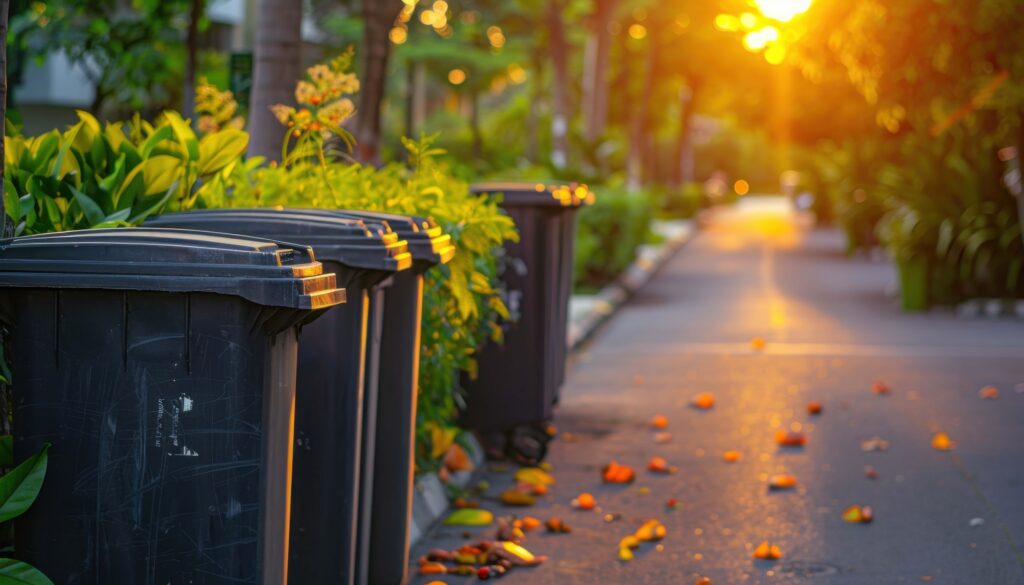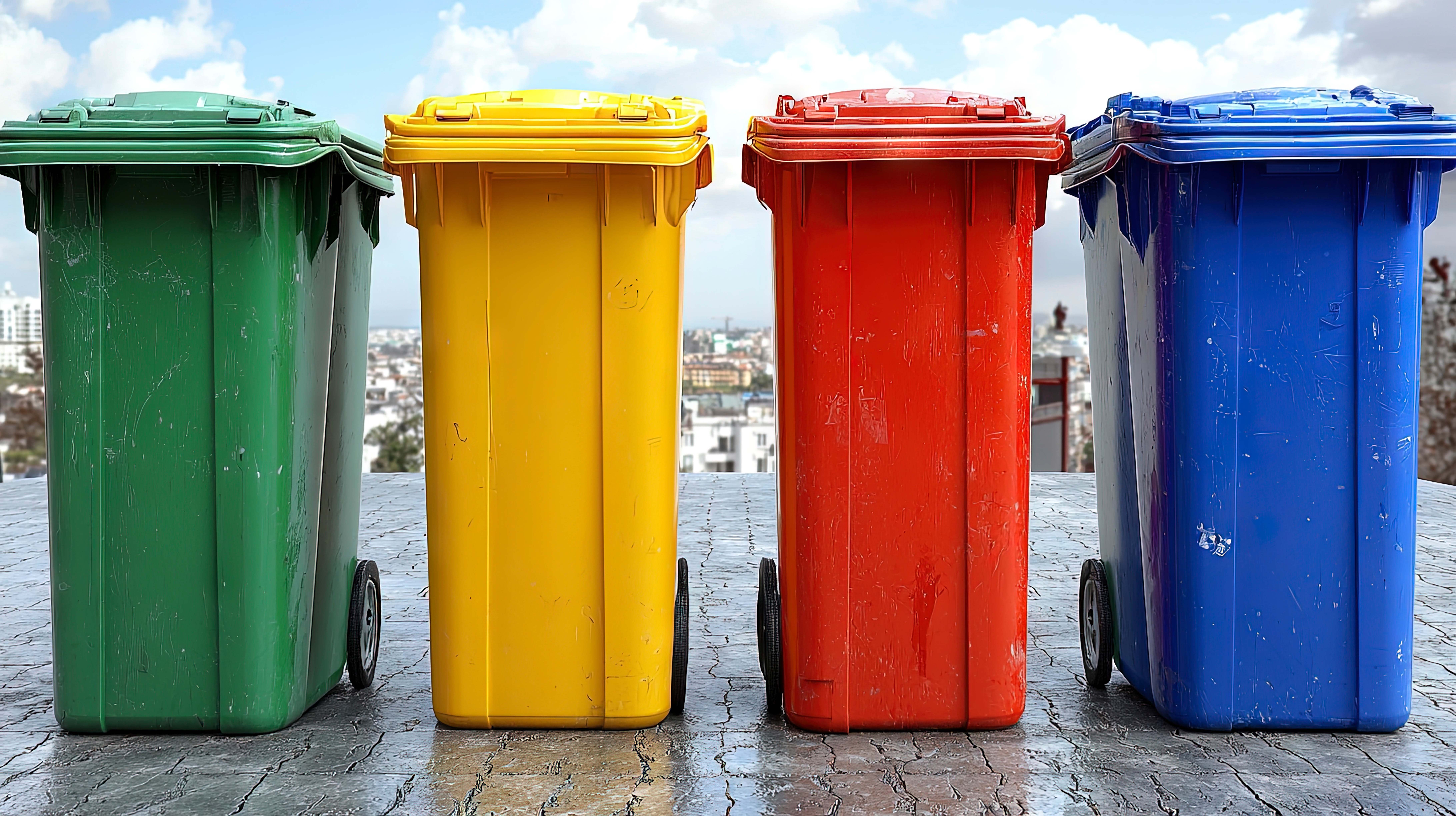In a time when our planet faces serious environmental challenges, the way we handle our household waste has never been more important. Many of us might think that throwing things away is just part of life, but it turns out that each item we discard has implications for our community and our environment. From simple trash pickup to innovative recycling programs, residential waste services play a crucial role in managing the garbage we produce every day. By understanding how these services work and participating in them effectively, we can all contribute to making a positive impact—not just for ourselves, but for future generations as well. Let’s dive into the world of residential waste management and discover how small changes can lead to significant results!
Residential waste services refer to the collection, disposal, and recycling of solid waste generated from homes. These services typically include regular curbside pickup of garbage, recycling, and bulk waste removal, ensuring that communities maintain cleanliness and promote environmentally responsible practices.

Overview of Residential Waste Services
Residential waste services are designed to manage the refuse that households produce daily. This includes everything from leftover food scraps to used paper products, all of which require proper handling. Effective waste management is essential; it keeps our neighborhoods clean and healthy while minimizing our impact on the environment.
The heart of many residential waste services lies in curbside pickup. This reliable service allows residents to place their trash and recycling at the side of the road for collection, typically once a week. It not only prevents waste from piling up around homes but also encourages proper disposal practices. When homeowners know their recyclables will be picked up regularly, they’re more inclined to prepare and sort their trash accordingly.
Curbside pickups generally include several categories: household trash, recyclables like plastics and metals, organic waste—which can be composted—and sometimes even hazardous materials that require special handling.
What’s particularly fascinating about these services is how technology and scheduling optimize routes for garbage trucks. These advancements minimize fuel consumption and increase efficiency, reducing greenhouse emissions. Efficient waste collection enhances community sustainability efforts.
Organic Waste Management
Now turning our focus on organic waste management, this aspect has garnered significant attention in recent years. Many municipalities have started residential composting programs to convert food scraps and yard waste into nutrient-rich compost instead of allowing them to end up in landfills. This diverts material from landfills and provides an eco-friendly option for recycling organic matter back into nature.
Households can play an active role in this initiative by setting up backyard compost bins or enrolling in local community programs. Composting at home reduces the amount of organic material that goes into your weekly trash bin by nearly 30%, enriching your garden soil—all while keeping methane-producing waste out of landfills!
Hazardous Waste Disposal
Finally, let’s touch on hazardous waste disposal. Certain items found within our homes—like batteries, paints, chemicals, and electronic devices—cannot simply be tossed into regular trash bins due to their potential harm to both human health and the environment. Many communities now host specific collection days where residents can safely dispose of these materials.
Proper handling of hazardous waste ensures that toxic substances do not seep into groundwater or contaminate soil; therefore, responsible disposal practices are crucial. Engaging in such initiatives demonstrates care not only for ourselves but also for future generations.
With an understanding of these critical aspects of residential waste management, we can further explore how local services effectively engage with communities to maintain cleanliness and sustainability.
Curbside Trash and Recycling Pickup
Curbside pickup is not only convenient but also promotes eco-friendly practices in our communities. By allowing waste collection directly from your curb, residents save time and effort, avoiding the tedious task of hauling trash to a central disposal site. Imagine a busy Saturday morning where you can enjoy your cup of coffee without worrying about making trips to the dump. Instead, you just set your bins out the night before and let the professionals handle it. This service contributes significantly to a cleaner environment.
Types of Waste for Curbside Pickup
- General Trash: This is your typical non-recyclable household waste collected weekly. Items like food wrappers and broken furniture fall into this category.
- Recyclables: Materials such as paper, glass, plastics, and metals are collected in designated bins, usually picked up bi-weekly. This helps ensure that valuable resources are kept out of landfills and can be repurposed.
- Bulk Items: Larger items like furniture or appliances require scheduled pickups. These larger services allow you to dispose of items responsibly without cluttering your home or sending them to waste sites unscrupulously.
San Antonio’s curbside recycling program stands out, boasting a remarkable 60% recycling rate within the city. This success story illustrates how these community initiatives make a real difference.
The positive outcomes of curbside pickup extend beyond convenience. It reduces reliance on landfills while contributing to lower carbon emissions associated with personal trips to waste disposal facilities. When residents participate in these programs, they’re joining a collective effort that benefits the planet—not just their households.
Emphasizing Participation
It’s essential for residents to actively engage with these programs; their participation directly impacts environmental preservation! By ensuring that recyclables are properly sorted and trash is disposed of correctly, homeowners help maintain the efficiency of these services. With clear understanding comes increased responsibility—and ultimately better results for everyone involved.
This emphasizes that when you put out your bins, it’s not just about eliminating waste; you’re playing an important part in fostering a healthier planet for future generations. Consider discussing these practices with your neighbors or even forming community groups to promote effective waste management further.
As we explore further, understanding how to manage organic materials and yard debris will enhance our commitment to sustainable waste practices in our communities.
Organic and Yard Waste Disposal
Organic waste encompasses a variety of items, primarily kitchen scraps like vegetable peels, fruit rinds, coffee grounds, and yard clippings from mowing or gardening. Not only do these materials often end up in landfills, but they also contribute to unnecessary greenhouse gas emissions if left to decompose improperly. By composting these organic materials, you transform them into nutrient-dense soil while significantly reducing your environmental impact.
Benefits of Composting
Composting provides several critical benefits. Perhaps most importantly, it helps divert a substantial amount of organic waste from landfills. The Environmental Protection Agency (EPA) estimates that nearly 30% of what we throw away could actually be composted. This diversion not only alleviates landfill pressure but also minimizes methane emissions that would otherwise occur as organic matter decomposes without oxygen in landfills.
“Composting is about transformation; not just of scraps into soil, but of our environmental footprint.”
Many progressive cities have embraced composting as a genuine solution to waste management challenges. For example, cities like Seattle operate successful green waste programs that provide residents with separate bins specifically designated for organic waste. This waste is collected regularly and sent to municipal facilities where it undergoes the necessary processes to become high-quality compost.
Homeowners can establish their own backyard compost bins, making composting both a community effort and a personal project. It’s crucial to follow established guidelines for effective decomposition, including balancing ‘green’ materials like fruit scraps with ‘brown’ materials such as dried leaves or shredded paper.
The act of composting and disposing of organic waste properly aligns with a larger commitment to sustainability and responsible living. Simple yet impactful practices—like adding a small bin for scraps in your kitchen or starting a garden compost pile—can help connect you more deeply with your environment while enhancing its health.
As we shift our focus to another critical aspect of responsible waste management, it’s essential to understand the practices needed for handling potentially hazardous substances safely within our communities.
Hazardous Waste Management
Hazardous waste is an umbrella term that encompasses items such as batteries, electronic devices, chemicals, and even medical waste. These materials can pose significant risks to both public health and the environment if not disposed of properly. You might be surprised to learn that household items like old paint and cleaning supplies can contain harmful substances; thus, taking care to handle them correctly shouldn’t be overlooked.
Safe Disposal Practices
The essence of effective hazardous waste management lies in safe disposal practices. Here’s how you can contribute to a cleaner environment while protecting your loved ones from potential dangers.
1. Identify Hazardous Materials
Recognizing hazardous materials is the first step toward safe disposal. Always check labels for warning symbols or phrases like “Caution,” “Toxic,” or “Danger.” By doing so, you empower yourself with the knowledge needed to differentiate between regular waste and materials that require special handling.
Picture this: You’re looking at a can of paint in your garage; it reads “flammable” — that’s your cue that this isn’t just any ordinary item!
2. Utilize Special Collection Days
Many municipalities offer special collection days throughout the year dedicated solely to hazardous waste. In San Antonio, for example, residents have access to these events where they can safely dispose of hazardous materials. Participating in these events not only ensures proper disposal but also fosters a sense of community responsibility toward our environment.
It’s quite rewarding to know you’re contributing to a healthier planet by simply showing up with those items you’ve been meaning to discard.
3. Drop-Off Locations
Apart from special collection days, numerous designated drop-off points are available for items like e-waste (think old computers or televisions) and used batteries. Facilities often provide clear instructions on accepted materials, making it simple for anyone to participate in environmentally friendly disposal practices.
Keeping these locations in mind not only alleviates clutter at home but also protects local wildlife and water sources from contamination.
Understanding how to recognize hazardous materials and utilizing safe disposal methods lays the groundwork for effective management, which helps ensure we make mindful choices regarding our waste. This awareness directly connects to an important aspect of waste services—how we manage our finances regarding these efforts.
Cost Breakdown of Waste Services
Understanding the costs associated with waste services goes beyond just numbers; it plays a critical role in managing household expenses while ensuring we’re properly disposing of waste. To get a clearer picture, let’s break down the typical costs involved in residential waste management.
Typical Cost Structure
| Service Type | Average Monthly Cost | Additional Fees |
|---|---|---|
| General Trash Pickup | $20-$30 | Extra bins: $5 each |
| Recycling Pickup | Included | Contamination fees: $10 |
| Organic Waste Pickup | $10-$15 | Seasonal surcharges: $5 |
| Hazardous Waste | Event-based | Varies by item weight |
In this table, you can see a variety of services offered along with their average costs. The general trash pickup service typically runs between $20 and $30 per month, which many households find reasonable given its necessity. However, if your home produces an unusually high amount of waste or has multiple bins, you may encounter an additional fee. For instance, extra bins can cost around $5 each.
Moving beyond just general trash, recycling services often come without any monthly charge, yet there’s the catch of contamination fees—usually around $10—that can hit your pocket if non-recyclables make their way into the bin.
As we gauge organic waste services, you’ll find they typically run between $10 and $15 per month. Interestingly, some service providers may implement seasonal surcharges—usually about $5—based on the time of year when organic waste tends to peak, directly relating to gardening seasons or holiday festivities that generate more organic refuse.
Finally, if you’ve ever had to dispose of hazardous materials, you know that costs can vary significantly. They are typically billed based on events where disposal happens; for example, specialized hazardous waste collection days in your community might have specific fees depending on the weight and type of materials being disposed of.
It’s essential to recognize that these costs fluctuate based on factors such as regional pricing, household size, and types of waste generated. This awareness allows residents to budget effectively while also contributing to sustainable waste practices within their communities.
Community and Environmental Impact
Effective residential waste services have far-reaching impacts on both communities and the environment. These systems do not merely serve a functional role; they help shape community identity and promote a culture of care for our shared space. When residents embrace waste management practices, positive changes ripple outward, enhancing local neighborhoods and broader ecosystems.
Environmental Benefits
One clear environmental benefit is that enhanced recycling and composting reduce the amount of waste that ends up in landfills. For instance, implementing single-stream recycling can significantly increase participation rates—by as much as 50%. This shift encourages more people to recycle, which means fewer resources are wasted and less greenhouse gas emissions are produced.
Moving toward eco-friendly solutions not only preserves precious natural resources but also mitigates climate change.
For example, recycling aluminum cans conserves 95% of the energy needed to create a new can from raw materials. Just imagine how many cans end up in our landfills every day—this practice can make a monumental difference!
Community Engagement
Yet the benefits extend beyond just the environment; they deeply involve community engagement. Programs aimed at promoting proper waste disposal and recycling cultivate a strong sense of community spirit. Activities like neighborhood clean-up days, education campaigns about recycling, or workshops about composting invite residents to become active participants in their community’s well-being.
In San Antonio, real-life examples illustrate how neighborhood cleanup events, often sponsored by local waste management companies such as Tiger Moving & Storage, lead to cleaner streets and foster increased pride among residents. When communities come together, they don’t just clean up their neighborhoods—they create bonds and build relationships that strengthen their collective identity.
This camaraderie transforms mundane waste disposal into a unifying cause. Residents working side-by-side remind each other of the importance of maintaining a clean environment, making every effort feel meaningful.
The impact of robust residential waste services is thus profound, intertwining environmental health with community pride. Enhanced engagement leads to proactive citizens who knowledgeably participate in maintaining their surroundings while minimizing their ecological footprints. As we deepen our understanding of our essential roles in sustaining our environment through improved waste services, it becomes evident that each bin represents a significant step toward a greener future for everyone involved.
In embracing these eco-friendly practices together, we not only improve our neighborhoods but also contribute to the well-being of our planet for generations to come.



